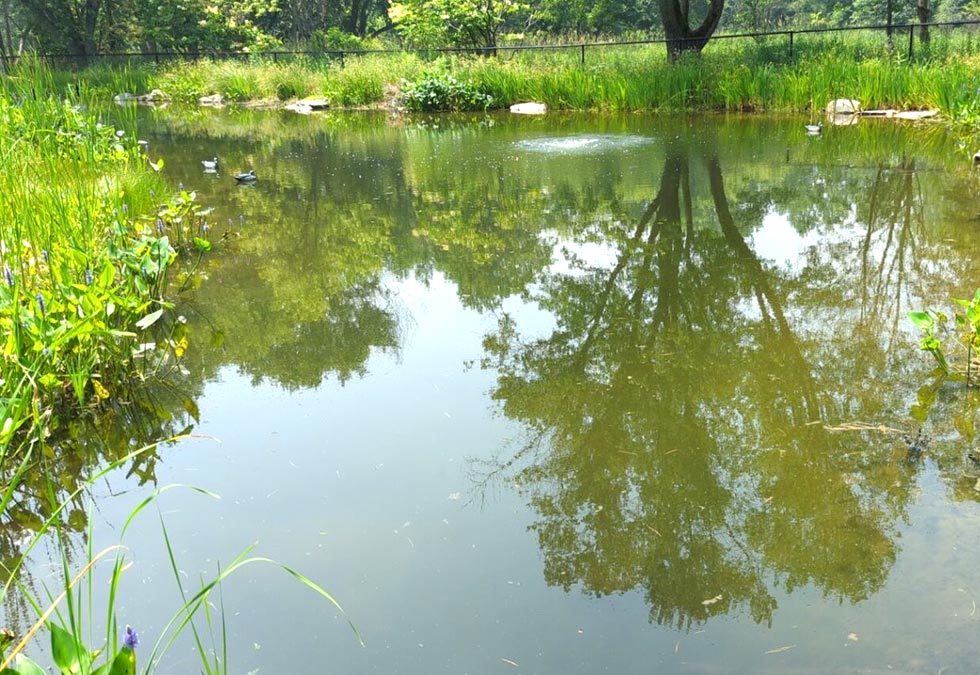The emergent zone in a lake refers to the area along the shoreline where emergent plants grow. These plants are rooted in the sediment beneath the water but extend above the surface, often forming a dense vegetation belt along the water’s edge. The emergent zone is characterized by native plants such as bulrushes, reeds, sedges, pickerelweed, blue flag iris and other species adapted to wet or shallow conditions
A key characteristic of plants growing in the emergent zone is that they are rooted in water. Their roots are submerged in the water or saturated soil, providing stability and access to nutrients. However, the stems, leaves, and flowers of emergent plants extend above the water surface, allowing them to photosynthesize and exchange gases with the atmosphere
The emergent zone marks the transition between aquatic and terrestrial habitats, supporting plant and animal life adapted to both environments. The dense vegetation of the emergent zone provides habitat and shelter for wildlife, including birds, fish, amphibians, insects, and small mammals. It serves as a nursery area for fish and provides bird nesting sites
While emergent plants are attractive, they can significantly improve lake water quality in several ways. Emergent plants have deep root systems that help stabilize the shoreline, preventing soil erosion. This reduces the amount of sediment entering the lake, which can cloud the water and degrade water quality. Emergent plants in this zone also contribute to improving water quality by absorbing excess nutrients like nitrogen and phosphorus, which often cause algae blooms. Removing these nutrients from the water, emergent plants help maintain a healthy balance in the lake ecosystem.
The canopy provided by emergent plants helps to shade the water, reducing the temperature. This can inhibit the growth of certain algae species that thrive in warmer conditions and contribute to the overall ecological balance of the lake.
The emergent zone plays a crucial role in the ecology and functioning of lake ecosystems, supporting biodiversity, stabilizing shorelines, and providing valuable ecosystem services that improve water quality.




